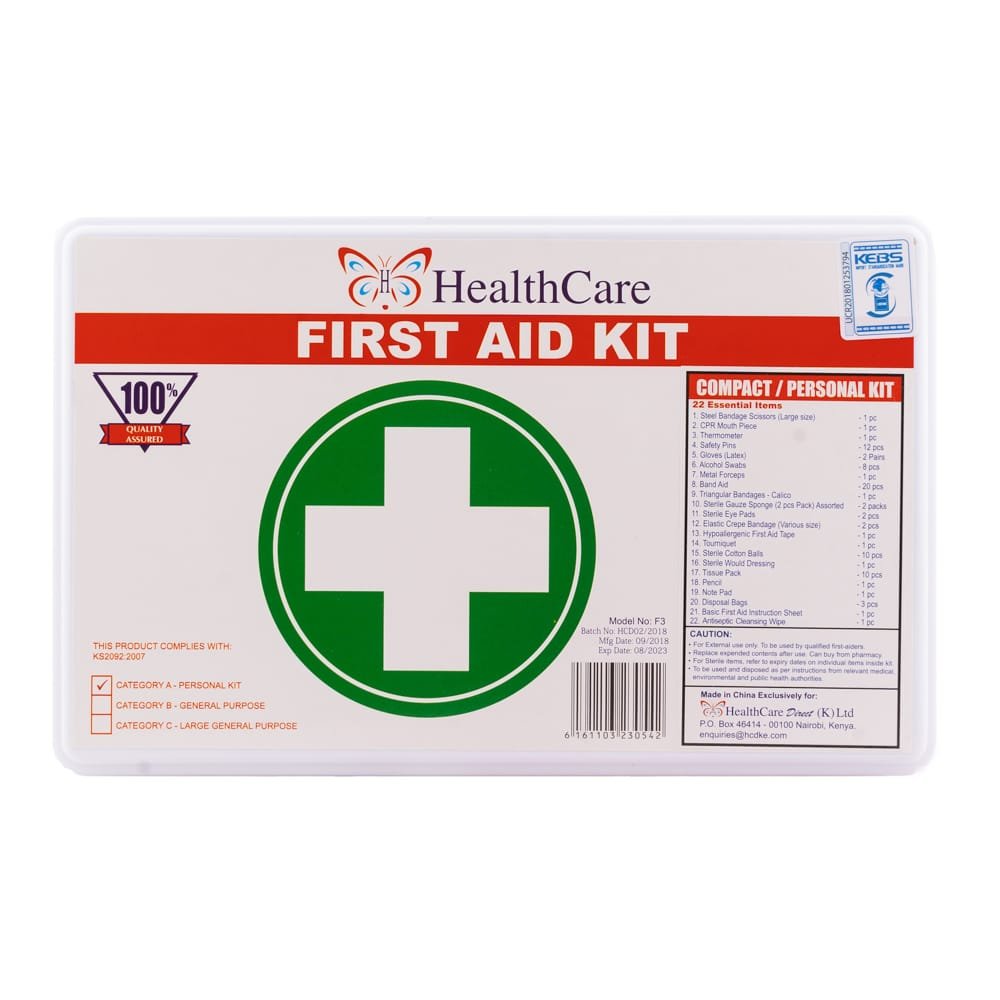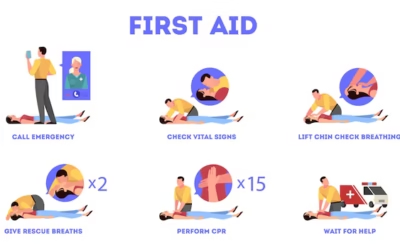Introduction to First Aid
First aid is the immediate care given to someone injured or suddenly taken ill. It isn’t about being a doctor—it’s about acting fast, staying calm, and doing the right thing until professional help arrives. Think of it as the calm in the chaos—a bridge between an emergency and full medical treatment.
Why Everyone Should Learn First Aid
Accidents don’t announce themselves. You could be the difference between life and death for someone you love—or a stranger. Learning first aid ensures you’re ready to respond when seconds count. Whether it’s a cut, choking, or cardiac arrest, knowing at least basic first aid skills empowers you to act effectively in emergencies that happen every day.
Key Objectives of First Aid
Preserving Life
The number one goal of first aid is to keep someone alive until medical professionals arrive. Performing CPR in cardiac arrest, clearing airways, or managing severe bleeding can literally save lives at critical moments.
Preventing the Condition from Worsening
First aid isn’t only about saving life—it’s about stopping a situation from spiraling. Applying pressure to a bleeding wound, immobilizing a fractured limb, or cooling a burn right away can reduce complications and foster a better recovery.
Promoting Recovery
First aid sets the stage for healing. Clean wounds heal faster, early burn treatment reduces scarring, and prompt immobilization prevents misalignment. In effect, first aid helps the body start recovering from day one.
The Role of First Aid in Emergencies
Immediate Response to Accidents
Accidents happen anywhere—at home, work, or in public. First aid education bridges the gap before emergency services arrive. By responding calmly and efficiently, you not only reduce panic but also increase a person’s chance of survival.
Handling Common Injuries and Medical Events
- Cuts and Bleeding: Press firmly with clean gauze or cloth, secure with a bandage, and elevate the wound to slow blood loss.
- Burns: Cool the skin with running water (not ice), cover with sterile dressings, and seek medical help for deeper burns.
- Choking: For adults and children, abdominal thrusts (Heimlich maneuver) can dislodge airway blockages; for infants, alternate back blows and chest thrusts.
- Heart Attacks and Strokes: Recognize signs early—sudden chest pain or facial droop—and begin CPR or place the person in the recovery position while awaiting help.
First Aid at Home
Importance of a Home First Aid Kit
A well-stocked kit should include bandages, antiseptic wipes, scissors, gloves, tweezers, burn dressings, a CPR face shield, and a small first aid manual. Think of it as your personal mini emergency response station.
Family Preparedness
Everyone in the household should know where the kit is and how to use it. Practice assembling your kit and running through basic scenarios—this builds confidence when real emergencies occur.
First Aid in the Workplace
Safety Regulations and Requirements
Many countries mandate that workplaces maintain first aid kits and trained personnel. It’s not just legal—it’s about caring for employee safety and minimizing downtime.
Employee Training and Response Readiness
Conduct regular training sessions and drills. If people know what to do, they’re more likely to act quickly and correctly when something happens.
First Aid in Schools and Educational Settings
Training Teachers and Students
Schools are full of active bodies and scrapes. Training students to call for help or use basic first aid kits empowers them—and equips teachers to handle incidents ranging from nosebleeds to asthma attacks.
Preventing Panic and Ensuring Safety
First aid education increases confidence. Children who learn basic care are less likely to panic when accidents happen.
Psychological First Aid
What Is It and Why Does It Matter
Not all emergencies create visible injuries. After trauma, individuals may experience fear, confusion, or shock. Psychological first aid provides emotional support and helps stabilize those affected.
Handling Emotional Trauma in Crises
Simple gestures—active listening, reassurance, and encouraging the affected person to stay calm—can reduce long-term mental health issues after traumatic events like accidents or disasters.
Importance of First Aid Certification
Training Programs and Providers
Groups like the Red Cross, St. John Ambulance, and American Heart Association offer hands-on, certified courses in first aid and CPR, combining theory and practice.
Benefits of Being Certified
Certification provides proven knowledge, boosts credibility, and is often required by employers. It can make a real difference in high-pressure situations.
First Aid Myths and Misconceptions
Common Mistakes
- Butter or toothpaste for burns? No—ice-cold water and sterile wraps are far more effective.
- Tilt the head back for nosebleeds? Modern advice: lean forward, pinch the nose, and breathe through the mouth. The old method risks inhalation of blood.
Separating Fact from Fiction
Education helps you ditch urban legends and rely on science-backed responses. No more grandmother’s remedies—just safe, effective first aid.
Global Perspective on First Aid
Red Cross and WHO Initiatives
These organizations run global campaigns to integrate first aid training into community health programs. They aim for a world where emergencies are met with immediate help.
First Aid Education Worldwide
Countries like the UK, Japan, and Sweden include CPR training in school curricula. Imagine the collective benefit if every high school graduate knew basic first aid.
Technology and First Aid
Mobile Apps and Online Resources
Apps such as the Red Cross First Aid app provide step-by-step instructions for emergencies, right at your fingertips.
How Tech Is Revolutionizing Emergency Care
Wearable devices can send alerts to emergency services; telemedicine enables guided first aid, and AI-driven tools help diagnose symptoms before responders arrive.
Building a First Aid Culture
Community Involvement
Neighborhood workshops, shared kits in public spaces, and school events help normalize first aid knowledge.
Encouraging Lifelong Learning
Certification isn’t a one-time thing. Refresher courses—every 2–3 years—help maintain skills, stay updated on protocols, and reinforce confidence.
Conclusion
First aid isn’t just about skills—it’s about responsibility. Whether saving a life, reducing suffering, or preparing for the unpredictable, first aid knowledge gives you the power to act. Create a world where everyone knows what to do in a crisis—and we can all breathe a little easier.
FAQs
What are the basic first aid skills everyone should know?
CPR, choking response (Heimlich), bleeding control, burn care, recovery position for stroke or cardiac issues, and use of an AED.
How long does a first aid certification last?
Most certifications are valid for 2–3 years; refreshers are recommended to stay current.
Can I perform first aid without certification?
Yes—you can and should help—but certified training ensures accuracy and confidence.
What should be in a first aid kit?
At minimum: bandages, antiseptics, gloves, scissors, tweezers, burn dressings, a CPR shield, and a manual.
Where can I find reliable first aid training?
Organizations like the Red Cross, St. John Ambulance, and local clinics or hospitals often offer certified courses.


0 Comments